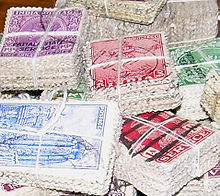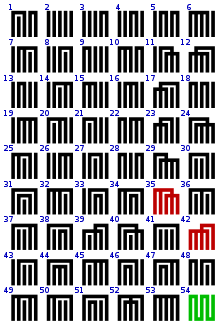
Back تجزئة مجموعة Arabic সেট বিভাজন Bengali/Bangla Partició (matemàtiques) Catalan Йыш пайлавĕ CV Partition Danish Partition (Mengenlehre) German Διαμερισμός συνόλου Greek Partición de un conjunto Spanish Tükeldus Estonian Partiketa (matematika) Basque



In mathematics, a partition of a set is a grouping of its elements into non-empty subsets, in such a way that every element is included in exactly one subset.
Every equivalence relation on a set defines a partition of this set, and every partition defines an equivalence relation. A set equipped with an equivalence relation or a partition is sometimes called a setoid, typically in type theory and proof theory.
- ^ Knuth, Donald E. (2013), "Two thousand years of combinatorics", in Wilson, Robin; Watkins, John J. (eds.), Combinatorics: Ancient and Modern, Oxford University Press, pp. 7–37